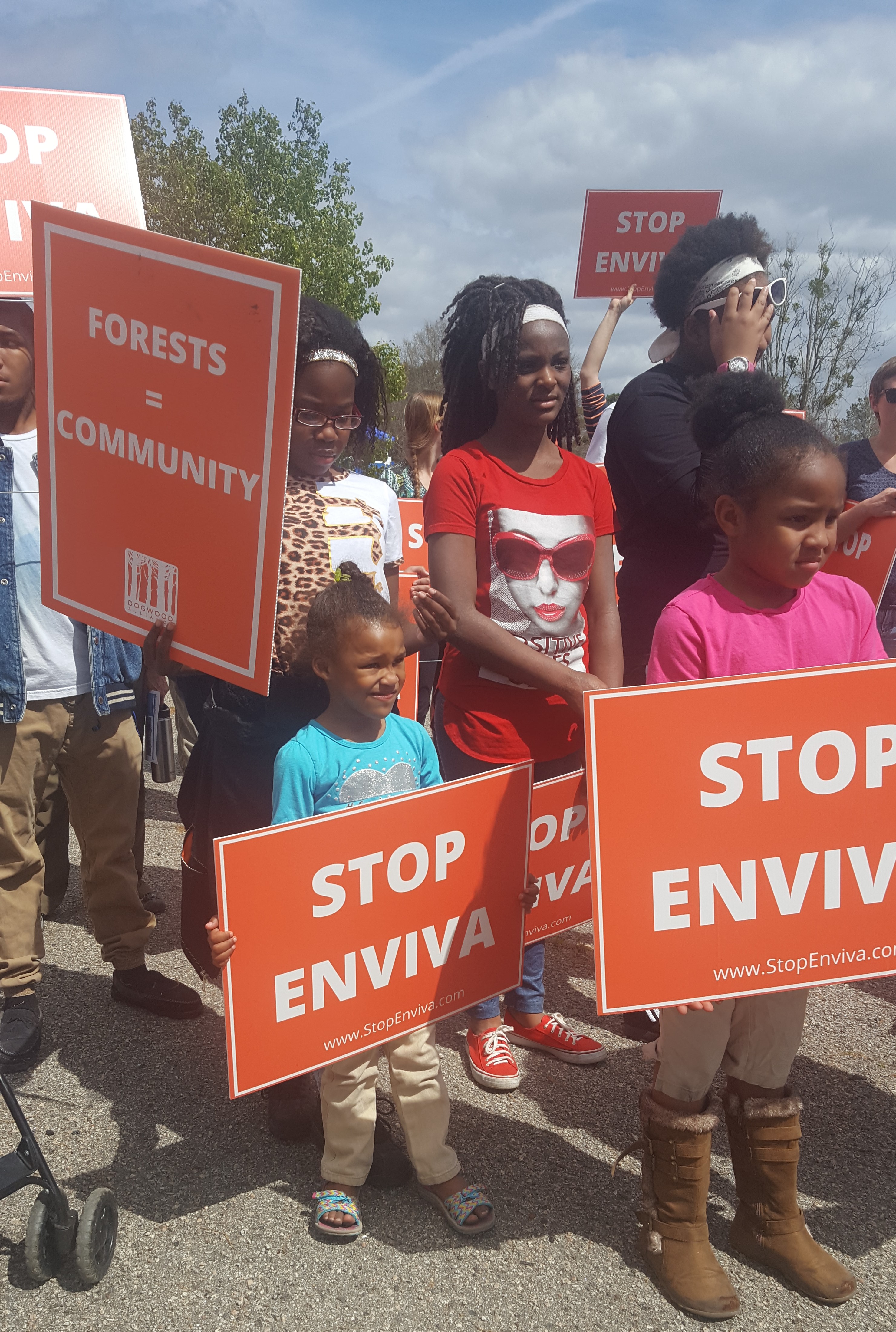Did you know that most of the biomass wood pellets produced in the US are intended for export? Wood pellet production has expanded primarily because of the global biomass power market. In 2009, the European Union adopted a renewable energy directive (officially called Directive 2009/28/EC). This directive laid out goals to increase the share of energy from renewable sources in the EU. Unfortunately, this encouraged the use of biomass (burning wood pellets for energy) to meet the goal. Unlike many other “renewable” energies, the global biomass power market releases a lot of carbon dioxide and is more polluting than the fossil fuels it’s meant to replace. By 2014, the biomass power market accounted for 40% of the EU’s renewable energy mix. By 2020, it accounted for 60% of the EU’s renewable energy mix.
Biomass is bad news for US forests, communities, and our climate.
In 2018, the EU increased its renewable energy quotas by more than half, from 20% by 2020 up to 32% by 2030. This type of directive dramatically changes the global market for biomass energy. The European Academy of Science, the Joint Research Center (the scientific advisory arm of the European Commission), and nearly 800 scientists provided evidence that biomass is not a renewable energy solution. The EU ignored their expertise and continued to give a free pass to biomass and missed the opportunity to put stricter sourcing controls in place.
Several countries have bought into the hype of biomass.
Before their withdrawal from the EU, the UK was one of the largest contributors to the EU renewable energy goal, primarily through “renewable” biomass power. Drax Group is the major biomass power provider in the UK . But in 2019, when Drax burned the equivalent of 127% of its entire annual wood production, it met less than 1% of the UK’s total final energy demand. Two thirds of those wood pellets come from the US. Drax’s business model – and demand for US pellets – is driven by government subsidies: about $1.2 billion USD per year. Biomass power market growth is driven almost entirely by subsidies like these given by European countries.


Subsidies drive this inflated international demand, and this props up an unsustainable biomass production market in the Southern US. The Southern Environmental Law Center identifies 23 large operating wood pellet mills, 12 mills that are proposed or under construction, and five additional prospective mills in the works. All for export to Europe and Asia to meet “renewable energy” goals that will not actually solve the climate crisis. The market distortion is so bad that the American Forest and Paper Association, the major forest industry organization, actually came out against subsidies for wood pellets.
There are many problems with the woody biomass energy sector. First, greenhouse gas emissions are about 50% higher than coal emissions for the same amount of energy produced. Second, new and renewable energy projects like wind and solar are better to generate electricity: they cost less and produce fewer global warming emissions. One renewable energy report published found that wind and solar are likely to be the least-cost options to achieve the objectives of decarbonization. Third, there are a lot of environmental justice concerns in North America surrounding the ways that companies boost bioenergy production.
Biomass power generation is the wrong solution to the right problem.
Biomass power generation uses a tragically shortsighted calculation of carbon accounting. Climate experts and community leaders, alongside countless supporting scientists, have confirmed that burning wood today will worsen climate change in the future.
